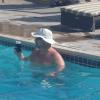Leaderboard
Popular Content
Showing content with the highest reputation on 07/11/2020 in all areas
-
A while back I posted about migraines kicking my butt and getting some CH hits, this caused me to hit the Zomig which led to migraines every day. I am a strange case as I never get a CH without having migraines for several days in a row and when I get the CH attacks the migraine stays after the CH attacks go away. I stopped the Zomig and stopped the D3 regiment as a reset so to speak. I went a month using nothing but 02 and Advil Pm with energy drinks, this seems to help if I do it the instant I feel a Migraine coming on. I started taking the D3 regiment again and I am glad to say that things have been doing well. The migraines are down to 2 or 3 a week and the CH have been dormant.3 points
-
...when episodic most of my cycles were eerily consistent...same number, intensity and timing. but on occasion, would get the "one hour wake-ups" all night long ...very odd change in a remarkably consistent pattern. it had to be an outside influence that i only figured out yrs later (greatly influenced by Batch's thoughts)...musta been allergies... ...would suggest a trial of Benadryl (diphenhydramine)....an old style anti histamine that works much better for clusterheads than the newer versions...do a search here for Batch and benadryl for dosage advice and a way better explanation.... ....for reasons i am unaware of O2 worked every time within mins for these wake ups...wasn't always the case "normally" ...where O2 was 75-90% effective.. best jonathan1 point
-
Hey Rudolf, Good questions. For starters, the following chart comes from the online survey of 313 CHers taking this regimen of which 257 (82%) experienced a favorable response in the first 30 days. The favorable response was a significant reduction in the frequency of their CH from 21 CH/week down to 3 to 4 CH/week as illustrated the normal distribution and cumulative probability curves for their 25(OH)D3 serum concentrations measured ≥30 days after start of regimen. As you can see, the mean 25(OH)D3 response is 80 ng/mL (200 nmol/L) with a min at 30 ng/mL (75 nmol/L) and max at 175 ng/mL (437 nmol/L). The blue S-shaped sigmoid cumulative probability plot illustrates the therapeutic response range as a probability. Ordinarily, I would shoot for a 25(OH)D3 serum concentration between 200 and 250 nmol/L (80 to 100 ng/mL) to ensure a higher probability of a favorable response. However, as you were unable to get a PTH lab, your serum calcium concentration is up against the normal reference range upper limit bump stop, you're not in a CH cycle and you're experiencing joint pain, I would hold off on any further loading doses and drop back to a vitamin D3 maintenance dose of 50,000 IU/week along with all the cofactors. After you've been on the vitamin D3 maintenance dose for a week to 10 days, do try to press your PCP/GP for a complete set of labs for your serum 25(OH)D3, calcium and PTH all at the same time. This is the only good way of assessing normal calcium homeostasis. Are you taking at least 400 mg/day magnesium and the vitamin K2 complex? The vitamin K2 complex menaquinones, MK4 and MK7 have the capacity to reduce calcium accumulation in soft tissues, joints and arteries while serving as a catalyst in building bone mineral density. If you're not taking the K2, I would start it as soon as you can get some. I take the LEF Super K with advanced K2 complex as it has both MK4 and MK7. If you haven't already done so, I would add Turmeric (Curcumin) at 1000 mg/day, 1000 to 2000 mg/day Omega-3 fish oil, and 3 grams/day liposomal vitamin C (1 gram every 3 hours). Curcumin and the Omega-3 fatty acids are anti-inflammatories so should help with the sore knuckle. Vitamin C is essential as the human genome lost the gene that expresses the enzyme needed to synthesize vitamin C from simple carbohydrates. Vitamin C is essential in synthesizing collagen needed by cells throughout the body including the cartilage in joints. It's also a potent antioxidant that supports hundreds of enzymatic reactions. Regarding the swollen knuckle, I've not seen this as a side effect from vitamin D3 therapy or taking the entire anti-inflammatory regimen in the 9+ years I've been tracking results reported by thousands of CHers taking this regimen. In most cases, vitamin D3 and Omega-3 fish oil would tend to reduce inflammation like this, hence the anti-inflammatory name I gave this regimen. That said, anything is possible. The Kirkland Adult 50+ Mature Multi is formulated with 220 mg of calcium here in the US. It may be different in formulations available in the UK and Europe. For reference, I'm a chronic CHer so have taken this regimen daily since I developed it in October of 2010. I've been essentially CH pain free the entire time and I keep my serum 25(OH)D3 above 100 ng/mL (250 nmol/L) all the time. My PCP is okay with this as long as my serum calcium remains within its normal reference range. I switched to the Bio-Tech D3-50 50,000 IU water soluble form of vitamin D3 in 2018 and have been taking one D3-50/week since January of 2019. The 3-year chart of my labs for 25(OH)D3, calcium and PTH illustrates both the safety of vitamin D3 at higher doses as well as normal calcium homeostasis. That is illustrated by the inverse relationship between serum calcium and PTH. As the calcium serum concentration goes up, the PTH serum concentration drops. This keeps serum calcium within its normal reference range by pulling less calcium from the gut. Take care and please keep us posted. V/R, Batch1 point
-
Hi Mox Thanks for your message. That's good to know the RC seeds are available. Do you keep your Vitamin D levels up? Have you been doing it a long time? Does is stop CH for you? Sorry for the questions, I'm so keen for this to work. The swelling came on suddenly last Sunday, which is the day after I took the weekly 50k IU vitamin D tablet. It may be nothing to do with the regime and I'm just getting arthritis in my old age, but seems coincidental. I will swap back to the 10k IU a day gel caps I think as maybe that will be easier for my body to handle. Tess1 point
-
Hi CHfather, thank you so much for replying. That sounds like I'm on the right track with the Vitamn D levels. Maybe I'll just maintain this level and see how it goes. I do have oxygen provided by the NHS fortunately and that is all I have been using for the headaches if I haven't managed to stop them with MM. My last two episodes were unrelenting though, especially at night time leaving me hardly able to function in the day. Having two kids to look after as well as work, CH is getting harder to cope with as I get older, although I'm fortunate to be episodic and I know many people have it a lot worse. I will try and contact Batch and will look into the RC seeds, thank you again.1 point
-
Hi Eggman, A TAC can come with many different autonomic symptoms. It is not always a red eye or tearing eye. It can also be a stuffed or running nose among many others. And the most important, following the ICHD-3 classification, it says: C. Either or both of the following: at least one of the following symptoms or signs, ipsilateral to the headache: – conjunctival injection and/or lacrimation – nasal congestion and/or rhinorrhoea – eyelid oedema – forehead and facial sweating – miosis and/or ptosis a sense of restlessness or agitation So technically, the most important symptom is a sense of restlessness. And that is also how a probable TAC is defined these days... strictily unilateral sidelocked headache with a sense of restlessness. That is a red flag for a TAC. If you are restless, other autonomic symptoms are technically not required for the diagnoses. Apart from the above autonomic symptoms there are also alternative ones: – conjunctival injection and/or lacrimation – nasal congestion and/or rhinorrhoea – eyelid oedema – forehead and facial sweating – forehead and facial flushing – sensation of fullness in the ear – miosis and/or ptosis I have myself very little eye tearing, quite some nasal congestion but the fullness in the ear is a big one for me ! I don't have CH but CPH but that doesn't matter... the autonomic symptoms are the same All the best ! siegfried1 point
-
It sounds like you would benefit form another opinion regarding your diagnosis. There is no competent physician who would be offended if you sought out an opinion. You have had imaging and have had this for a long time so it's unlikely something like a tumor. Cluster headaches are a diagnosis of exclusion which basically means if the symptoms fit and nothing else is found; you have cluster headaches. Personally I believe if you have the classic symptoms and O2 used properly knocks out an attack: diagnosis is straightforward. The diagnosis and treatment of cluster headaches is pretty unique so a proper diagnosis is appropriate. There is a whole constellation of severe headache called trigeminal autonomic cephalgia (TAC) many of which have a nuance treatment unique to that type of headache. You are in an awkward spot if the O2 advise from @jon019 doesnt' abort an attack I would pursue another opinion.1 point
-
...one of the problems with undiagnosed yet treated conditions is how insurance companies will or most likely WON'T cover the treatments or procedures you need...you may be fine with current but run into problems with next...it does sound like your PCP is treating appropriately tho the vison issue sounds more migraine than CH... .....many folks find that immediate release verapamil is superior to extended release.... put that in your consideration file and note that 360 is a somewhat low dose....480 seems to be the sweet spot and some go much higher as needed.... .....what type of O2 mask and flow do you use...a specialized clustermask and 15-25 lpm can make a huge difference....adjustments in body position may help...I found sitting at a 45 degree forward body lean with head down "looking at feet" to be optimal...YMMV best jonathan1 point
-
@EggMan welcome i don’t get autonomical symptoms either with my headaches. I get pain mostly behind my head and ear, also behind my eye. I was wondering if I had occipital neuralgia because an MRI of my neck a year ago showed an inflamed ligament at the base of my neck. I was told I needed physical therapy but I can’t afford that. Have you found occipital neuralgia treatments are helping? Kat1 point




